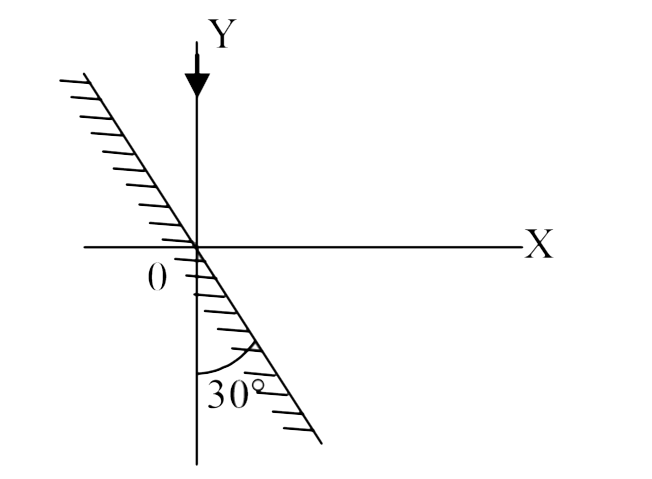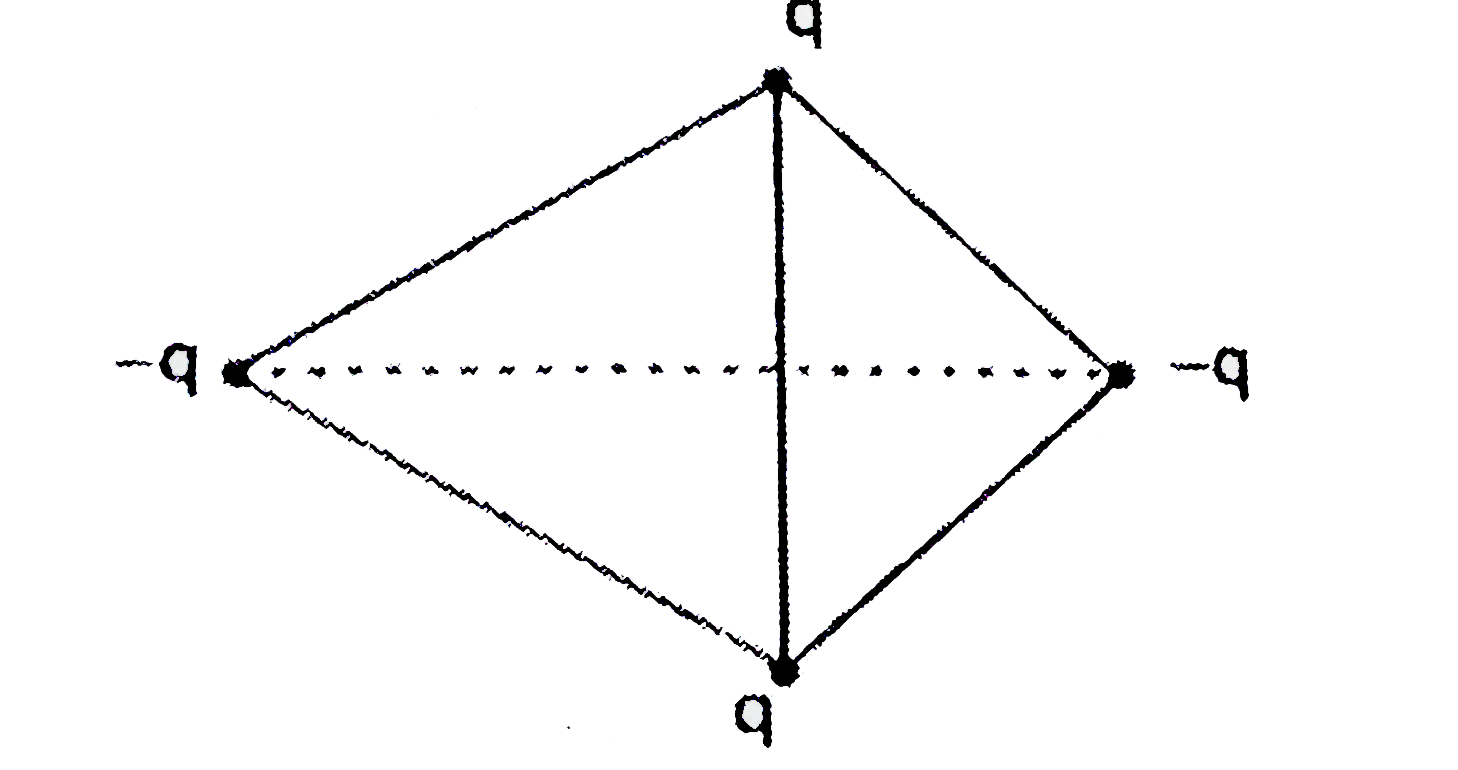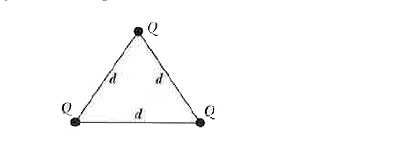Four point charges have equal magnitudes. Three are positive, and one is negative, as the drawing shows. They are fixed in place on the same straight line, and adjacent charges are equally separated by a distance d. Consider the net electrostatic force acting on each charge. Calculate the ratio of the largest to the smallest net force.

2.3
1.5
The correct Answer is:B
Step by step video & text solution for Four point charges have equal magnitudes. Three are positive, and one is negative, as the drawing shows. They are fixed in place on the same straight line, and adjacent charges are equally separated by a distance d. Consider the net electrostatic force acting on each charge. Calculate the ratio of the largest to the smallest net force. by Physics experts to help you in doubts & scoring excellent marks in Class 12 exams.
Updated on:21/07/2023Topper's Solved these Questions
- ELECTRIC CHARGES AND FIELDSBOOK - RESNICK AND HALLIDAYCHAPTER - ELECTRIC CHARGES AND FIELDSEXERCISE - Practice Questions (More than one correct Type )
3 Videos
- ELECTRIC CHARGES AND FIELDSBOOK - RESNICK AND HALLIDAYCHAPTER - ELECTRIC CHARGES AND FIELDSEXERCISE - Practice Questions (Linked Comprehension)
5 Videos
- ELECTRIC CHARGES AND FIELDSBOOK - RESNICK AND HALLIDAYCHAPTER - ELECTRIC CHARGES AND FIELDSEXERCISE - Problems
63 Videos
- ELASTICITYBOOK - RESNICK AND HALLIDAYCHAPTER - ELASTICITYEXERCISE - PRACTICE QUESTIONS (Integer Type)
3 Videos
- ELECTRIC POTENTIALBOOK - RESNICK AND HALLIDAYCHAPTER - ELECTRIC POTENTIALEXERCISE - (PRACTICE QUESTIONS) Integer Type
1 Videos
Similar Questions
Knowledge Check
A charge +q is fixed to each of three corners of a square .On the empty corner a charge Q is placed such that there is no net electrostatic force acting on the diagonally opposite charge then
AQ=−2qBQ=−2√2qCQ=−√2qDQ=−4qPositive point charges are placed at the vertices of a star shape as shown in the figure. Direction of the electrostatic force on a negative point charge at the centre O of the star is
 Atowards rightBvertically upCtowards leftDvertically down
Atowards rightBvertically upCtowards leftDvertically downThree point charges are placed at the corner of an equilateral triangle. Assuming only electrostatic forces are acting.
Athe system can never be in equilibriumBthe system will be equilibrium if the charges rotate about the centre of the triangleCthe system will be in equilibrium if the charges have different magnitudes and different signsDthe system will be in equilibrium if the charges have the same magnitude but different signs.
Four small point charges (each of equal magnitude q) are placed at four corners of a regular tetrahedron of side a. find out potential energy of charge system

View SolutionTwo point charges , each of 1μC ,are separated from each other by a distance of 10 cm in air . Electrostatic force acting between them is ____________
View SolutionThree identical point charges, q, are placed at the vertices of an equilateral triangle as shown in the figure. The length of each side of the triangle is d. Determine the magnitude and direction of the total electrostatic force on the charge at the top of the triangle.

View SolutionGiven are four arrangements of three fixed electric charges. In each arrangement, a point labelled P is also identified - test charge, +q, is placed at point P. All of the charges are of the same magnitude Q, but they can be either positive or negative as indicated. The charges and point P all lie on a straight line. The distances between adjacent items, either between two charges or between a charge and point P, are all the same.

Correct order of choices in a decreasing order of magnitude of force on P is
View SolutionTwo charges of equal magnitudes and at a distance r exert a force F on each other. If the charges are halved and distance between them is doubled, then the new force acting on each charge is
View Solution
